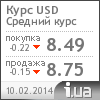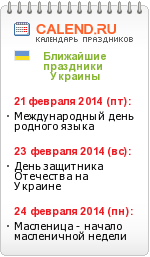|
DESCRIPTION
PENTAVAC PFS (Diphtheria, Tetanus, Pertussis (Whole Cell), Hepatitis B (rDNA) and Haemophilus Type b Conjugate Vaccine (Adsorbed) I.P.) supplied by Serum Institute of India Ltd., in a single dose pre-filled syringe (PFS) is a homogeneous liquid containing purified diphtheria and tetanus toxoids, inactivated whooping cough (pertussis) organisms, highly purified, noninfectious
particles of Hepatitis B surface antigen (HBsAg) and Hib component as a bacterial subunit vaccine containing highly purified, non-infectious Haemophilus influenzae type b (Hib) capsular polysaccharide chemically conjugated to a protein (Tetanus Toxoid). Surface antigen of the Hepatitis B virus (HBV) is obtained by culturing genetically engineered Hansenula polymorpha yeast cells having the surface antigen gene of the Hepatitis B virus. The Hepatitis B surface antigen (HBsAg) expressed in the cells of Hansenula polymorpha using recombinant DNA procedures is purified through several chemical steps. Thiomersal is added as preservative. The vaccine meets the requirements of WHO when tested by the methods outlined in WHO, TRS 786 (1989) and 800 (1990). The Hib polysaccharide is prepared from capsular polysaccharide of H. influenzae type b strain and after activation is coupled to Tetanus Toxoid.
Each pre-filled syringe contains 0.5 ml (single dose):
PENTAVAC PFS does not prevent Hepatitis caused by other agents different from HBV (as virus A, C and E) but it is considered effective in preventing Hepatitis caused by the delta agent. Hib vaccine does not protect against disease due to other types of H.influenzae nor against meningitis caused by other organisms.
INDICATIONS
PENTAVAC PFS is indicated for the active immunization of infants, at or above the age of 6 weeks against Diphtheria, tetanus, whooping cough, Hepatitis B and Haemophilus influenzae type b infections.
In young children the EPI recommends as many antigens as possible to be administered at a single visit.
PENTAVAC PFS should NOT be used for the birth dose.
The combined vaccine can be given safely and effectively at the same time as BCG, MMR, Measles and Polio vaccines (OPV and IPV), Yellow fever vaccines and Vitamin A supplementation.
DOSAGE AND ADMINISTRATION
For active immunization of infants and preschool children, it is recommended that three intramuscular injections of 0.5 ml be administered with an interval of four weeks between doses starting at six weeks of age. In countries where perinatal transmission of Hepatitis B virus is common, the first dose of Hepatitis B vaccine should be given as soon as possible after birth. In this case,
the combination vaccine can be used to complete the primary series from 6 weeks of age.
| Dose |
Age at immunization |
| 1st dose |
6 weeks |
| 2nd dose |
10 weeks |
| 3rd dose |
14 weeks |
Source: WHO / IAP recommended immunization schedule. A booster dose of DTP and Hib should be given at the age of 15-18 months.
A reinforcing injection of DTP should be administered at 5 years of age (i.e. at the time of school entry). IAP (Indian Academy of Pediatrics) recommends that wherever combination vaccines are available they can be substituted for monovalent formulations in the national immunisation schedule wherever indicated.
ADMINISTRATION
The liquid vaccine pre-filled syringe should be shaken before use to homogenize the suspension. The vaccine should be injected intramuscularly. Do not inject subcutaneously or intravenously. The anterolateral aspect of the upper thigh is the preferred site of injection, or into the deltoid muscles of older children. An injection into a child's buttocks may cause injury to the sciatic nerve and is not recommended. It must not be injected into the skin as this may give rise to local reactions. One pediatric dose is 0.5 ml. A sterile syringe and sterile needle must be used for the injection.
Another injection if co-administered with PENTAVAC PFS should be given at a different site. Only sterile needles and syringes should be used for each injection.
The vaccine should be visually inspected for any foreign particulate matter and /or variation of physical aspect prior to administration. In event of either being observed discard the vaccine. PENTAVAC PFS should not be mixed with any other vaccine before injection.
CONTRAINDICATIONS
Hypersensitivity to any component of the vaccine. It is a contraindication to use this or any other related vaccine after an immediate anaphylactic reaction associated with a previous dose. It is a contraindication to administer the vaccine in the presence of any evolving neurological condition. Encephalopathy after a previous dose is a contraindication to further use. Immunization should be deferred during the cause of an acute illness. Vaccination of infants and children with severe, febrile illness should generally be deferred until recovery. However, the presence of minor illnesses such as mild upper respiratory infections with or without low grade fever is not a contraindication for further use.
WARNINGS
Due to the long incubation period of Hepatitis B (upto 6 months or more), cases where prior exposure to Hepatitis B virus has taken place, vaccination may not be effective. If any of the following events occur in temporal relation to receipt of PENTAVAC PFS, the decision to give subsequent doses of vaccine containing the pertussis component should be carefully considered. Temperature 40.5°C (105°F) or more within 48 hours of a dose unexplained by another cause. Collapse or shock-like state (hypotonic-hypo responsive episode) within 48 hours. Persistent, inconsolable crying lasting 3 hours or more occurring within 48 hours. Convulsions with or without fever occurring within three days. There may be circumstances, such as a high incidence of pertussis, when the potential benefits outweigh possible risks, particularly since these events are not associated with permanent sequelae. PENTAVAC PFS should not be given to children with any coagulation disorder, including thrombocytopenia that would contraindicate intramuscular injection unless the potential benefit clearly outweighs the risk of administration. Infants and children with a history of convulsions in first-degree family members (i.e. siblings and parents) when administered DTP containing vaccine have an increased risk for neurologic events and permanent neurologic damage when compared with infants without such history. Infants and children with recognized possible or potential underlying neurologic conditions seem to be at enhanced risk for the appearance of manifestation of the underlying neurologic disorder within two or three days following vaccination. The administration of PENTAVAC PFS to children with proven or suspected underlying neurologic disorders that are not actively evolving must be decided on an individual basis.
PRECAUTIONS
Prior to an injection of any vaccine, all known precautions should be taken to prevent adverse reactions. This includes a review of the parent's history with respect to possible sensitivity and any previous adverse reactions to the vaccine or similar vaccines. Previous immunization history, current health status and a current knowledge of the literature concerning the use of the vaccine under consideration. Immunosuppressed children may not respond.
Prior to administration of PENTAVAC PFS, health care personnel should inform the guardian of the child the benefits and risks of immunization, and also inquire about the recent health status of the child to be injected. Parents of a child with a family history of seizures should be informed that their child has an increased risk of seizures following administration of any DTP containing vaccine and should be instructed regarding appropriate medical care in the unlikely event of a seizure. Special care should be taken to ensure that the injection does not enter a blood vessel.
Adrenaline injection (1:1000) must be immediately available should an acute anaphylactic reaction occur due to any component of the vaccine. For treatment of severe anaphylaxis the initial dose of adrenaline is 0.1- 0.5 mg (0.1-0.5ml of 1:1000 injection) given s/c or i/m. Single dose should not exceed 1 mg (1 ml). For infants and children the recommended dose of adrenaline is 0.01mg/kg (0.01ml/kg of 1:1000 injection). Single pediatric dose should not exceed 0.5mg (0.5 ml). The mainstay in the treatment of severe anaphylaxis is the prompt use of adrenaline, which can be lifesaving.
As with the use of all vaccines, the vaccinee should remain under observation for not less than 30 minutes for possibility of occurrence of immediate or early allergic reactions. Efcorlin hydrochloride and antihistaminics should also be available in addition to supportive measures such as oxygen inhalation.
DRUG INTERACTIONS
As with other intramuscular injections, use with caution in patients on anticoagulant therapy. Immunosuppressive therapies, including irradiation, antimetabolites, alkylating agents, cytotoxic drugs, and corticosteroids (used in greater than physiologic doses)may reduce the immune response to vaccines. Short-term (< 2 weeks) corticosteroid therapy or intra-articular, bursal, or tendon injections with corticosteroids should not be immunosuppressive.
ADVERSE REACTIONS
Adverse reactions associated with the use of this vaccine include local redness, warmth, oedema, and induration with or without tenderness, as well as urticaria and rash. Systemic reactions such as fever, headache, drowsiness, weakness, fretfulness, nausea, vomiting, diarrhoea and anorexia may occur in a few infants. Some data suggests that febrile reactions are more likely to occur in those who have experienced such responses after prior doses of DTP vaccine.
High fever (i.e. temperature of 40.5°C (105°F) and persistent, inconsolable crying lasting 3 hours or more has been reported. These events occur infrequently and appear to be without sequelae. Occasionally, a nodule may be palpable at the injection site of adsorbed products for several weeks. Sterile abscesses at the site of injection have been reported (6 to 10 per million doses).
In study conducted on PENTAVAC, the frequency of local and systemic reactions was not higher with subsequent doses and was well within the range of other DTP containing vaccines.
Evidence does not indicate a causal relation between DTP vaccine and SIDS. Studies showing a temporal relation between these events are consistent with the expected occurrence of SIDS over the age range in which DTP immunization typically occurs. No association has been shown for hospitalizations due to infectious diseases and receipt of DTP.
NERVOUS SYSTEM
The following neurologic illnesses have been reported as temporally associated with vaccine containing tetanus toxoid; neurological
complications including cochlear lesion, brachial plexus neuropathies, paralysis of the radial nerve, paralysis of the recurrent nerve, accommodation paresis, and EEG disturbances with encephalopathy. It has been suggested that there is a causal relation between Guillain-Barre syndrome (GBS) and vaccines containing tetanus toxoid. In the differential diagnosis of polyradiculoneuropathies administration of a vaccine containing tetanus toxoid should be considered as a possible etiology. Short-lived convulsions (usually febrile), or collapse (hypotonic hyporesponsive episode) occur infrequently and appear to be without sequelae.
More severe neurologic events, such as a prolonged convulsion, or encephalopathy, although rare, have been reported in temporal association with DTP administration. An analysis of these data failed to show any cause and effect association.
CARDIOVASCULAR SYSTEM
An infant who developed myocarditis several hours after immunization has been reported.
RESPIRATORY SYSTEM
Respiratory difficulties including apnea have been observed.
LOCAL
Rash and allergic reactions have been observed.
IMMUNE DEFICIENCY
Individuals infected with the human immuno-deficiency virus (HIV), both asymptomatic and symptomatic, should be immunized with combined vaccine according to standard schedules.
STORAGE
The vaccine should be stored at a temperature between +2°C and +8°C (35.6° to 46.4°F). NOT TO BE FROZEN. Product which has been exposed to freezing should not be used.
SHELF LIFE
Do not exceed the expiry date stated on the external packaging.
PRESENTATION
1 x 0.5 ml - 1 dose pre-filled syringe
|










 Поделиться
Facebook
Класс!
Поделиться
Facebook
Класс!


